Hey. A huge number of articles have been written about why electronics cannot be wetted. Many of them repeat the common truth known to the majority that if an electronic device is wet, then it cannot be turned on, but must be disconnected from the power supply and dried. The main horror story in this case is the corrosion of internal elements.
But, in fact, corrosion is different. If your phone falls into water and gets wet, and you decide to turn it on, the phone is most likely to die from electrocorrosion, which is insidious in that it happens quickly and often causes deep damage. Therefore, apart from the recommendation not to turn it on, experts recommend disassembling the device and disconnecting the battery as soon as possible.
It turns out that if a phone with a collapsible body falls into water, the chances are much greater than that of its non-separable counterpart – there is a chance that the battery will fly off when it falls, which means that the power supply to the board will stop.
But this is all theory, known to almost every electronics user. Today I propose to once again look inside the phone and, in contrast to dry words and boring photographs, in practice to get acquainted with what electrocorrosion is and how it looks.
Today we will see in real time, with our own eyes, what processes are taking place inside a sinking phone.
But before that, it should be understood that even if the phone fell into the water in the off state, this does not mean that nothing will happen to it.
The test board will be the Samsung Galaxy S3.
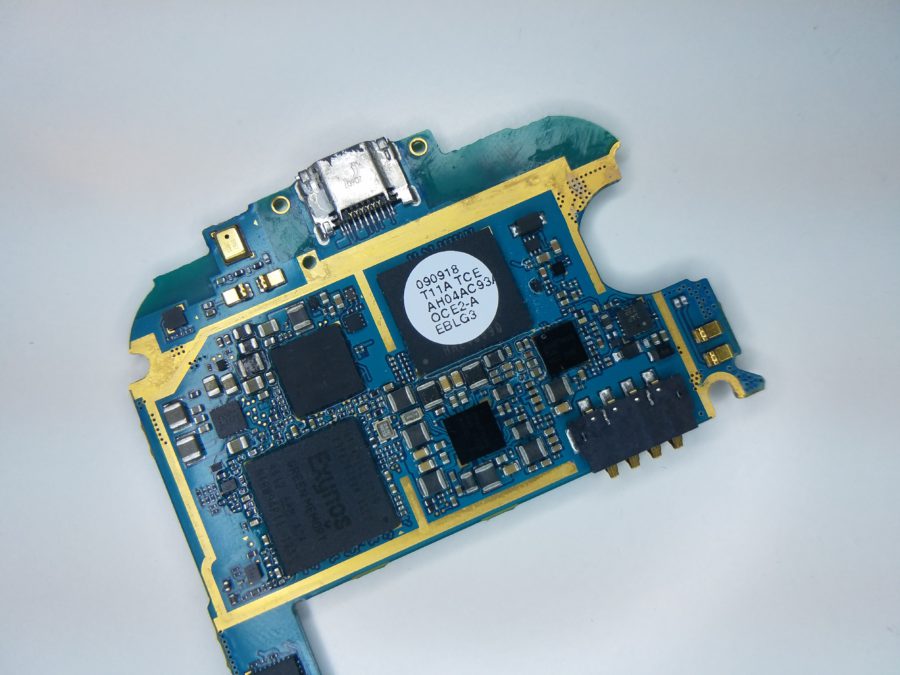
The board on which the components are located is a multilayer sandwich consisting of various materials, including metal conductive tracks pressed between layers of PCB and glue.
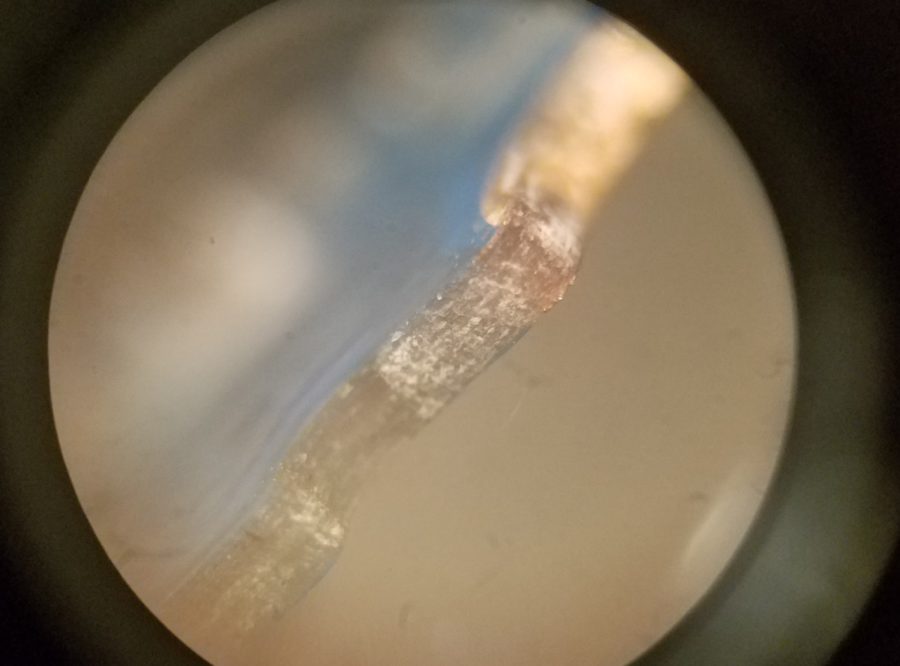
When the device is in a humid environment for a long time, water begins to penetrate between the layers of the board, damaging it. The deeper the water penetrates between the layers, the more unpredictable the further fate of the device will be. If you do not take action, the board will simply rot, alas.
That is why craftsmen almost never give guarantees for recessed phones. A drowned man, even recovered, can finally stop working at any time, even after a competent recovery.
And now, as the host of the Russian version of the show 'Galileo' Alexander Pushnoy said: 'Eeeperiments!'
I repeat, water itself, which has got inside the phone for a short period of time, can practically not cause damage if the phone is switched off at that moment and its battery is disconnected. Moreover, if it is distilled water, then there may be no damage at all (the problems are caused not by H2O itself, but by salts, minerals and metals dissolved in it). But enough words – let's see what happens to the board when the phone is turned off when water gets on it.
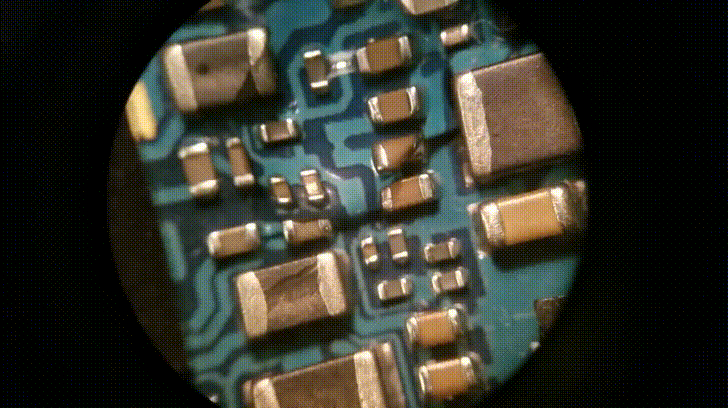
The link can be used to watch the video in original quality: 'Water and telephone without tension'.
In this case, I decided to show the importance of disconnecting the battery and wet the switched off phone, but did not disconnect the battery. As you can see, nothing terrible happened. Yes, even in this case, slight traces of corrosion are noticeable, since even with a switched off phone, there is an electric current in the circuits – there are a lot of processes, the operability of which is maintained even in the off state.
After that, let's clean the board from moisture and take a look at the damage. They are not noticeable. This does not mean that they are absent, but there is definitely no critical damage.
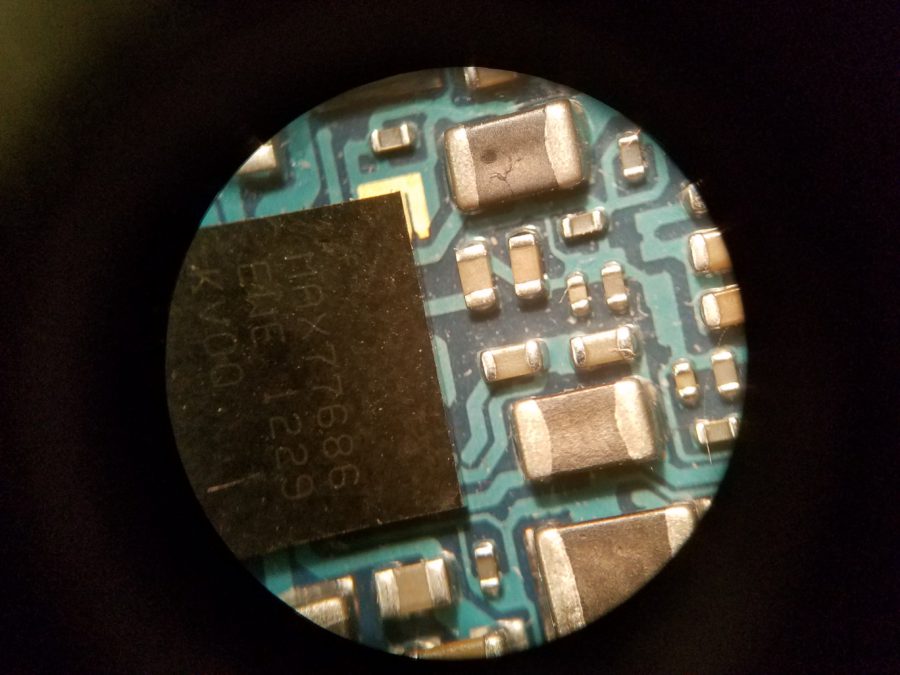
The thesis about the importance of turning off a wet phone is partially confirmed – corrosion does not develop rapidly, and there are very high chances either to save the device, getting off with little blood, or to do without any consequences at all.
Now let's proceed to the second part of the execution of our poor fellow Samsung Galaxy S3.
We wet the board and apply voltage!
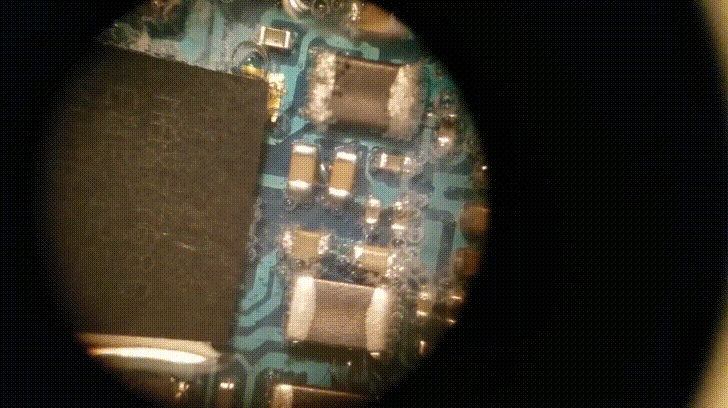
The link can be used to watch the video in original quality: 'Live board and water'.
Note the boiling process around energized electronic components. This is electrocorrosion in person. This process is happening rapidly. The more often you try to turn on a wet and not dried device, the more damage you inflict on it and the less chance of recovery you leave.
Gradually, oxides will become stronger, and corrosion will penetrate deeper and deeper. Sooner or later, this will lead to the fact that the board will receive irreversible damage due to short circuits, and repairs will be inappropriate. And yet, some important elements may simply not withstand such bullying and burn out (which most often happens). Do not turn on a wet phone.
Conclusion
Many times, reading about how to deal with a wet phone, I understood why this should be done, since I repeatedly faced the consequences – I often had to restore phones after getting wet. However, the process of electrocorrosion itself has never been observed. A search on the Internet did not give any result either. This is what prompted me to inhuman experiments on a smartphone. Well, the goal has been achieved, electrocorrosion is caught red-handed. But this is just the beginning. There is still a lot of experiments and discoveries ahead.
